Physics



The phenomenon of quantum tunneling remains a fascinating and enigmatic one, defying classical notions of particle behavior. This paper presents a novel theoretical investigation of the tunneling phenomenon, from the viewpoint of Hartman effect, showing that the classical concept of spatiality is transcended during tunneling, since one cannot describe the process as a crossing of the potential barrier. This means that quantum tunneling strongly indicates that quantum non-locality should be understood as an aspect of quantum non-spatiality. It is also emphasized that according to the Conceptuality Interpretation of quantum mechanics, a non-spatial state should be understood as a ‘state of abstractness’ of a conceptual-like entity, which only when it reaches its maximum degree of concreteness, during the wave-function collapse, can enter the spatiotemporal layer of our physical reality.
Aerts, D. & Sassoli de Bianchi, M. (2023). The Nature of Time in Relativistic Operational Reality - PDF - Timing & Time Perception (published online ahead of print 2024). https://doi.org/10.1163/22134468-bja10102DOI: 10.1163/22134468-bja10102.
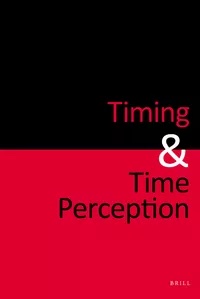
Aerts, D. & Sassoli de Bianchi, M. (2023). The nature of time and motion in relativistic operational reality - PDF - Submitted to: THEORIA. An International Journal for Theory, History and Foundations of Science. The content of this article is an extended version of the talk titled "The luminiferous elephant in the room and the nature of motion in Einstein's special relativity" that the authors gave on April 28, 2022, at the VIII International Workshop on Quantum Mechanics and Quantum Information: Quantum Theory and Reality.

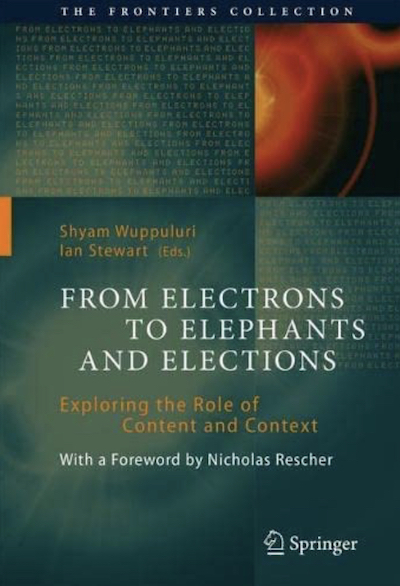

Aerts, D & Sassoli de Bianchi, M. (preprint: 2020). Are Bell-tests only about local incompatibility? arXiv:2006.08607 [quant-ph] -To be publisehd in a forthcoming World Scientific volume dedicated to Quantum Mechanics - PDF

Aerts, D. & Sassoli de Bianchi, M. (2021). Single-entity violation of Bell-CHSH inequality and no-signaling conditions. Journal of Mathematical Physics 62, 092103. Doi: 10.1063/1.5134436 - PDF
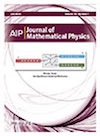
Aerts, D., Sassoli de Bianchi, M., Sozzo, S. & Veloz, T. (2021). Preface of the Special Issue: International Symposium “Worlds of Entanglement” - Second Part Foundations of Science 25, pp. 1–4. Doi: 10.1007/s10699-021-09785-2 - PDF
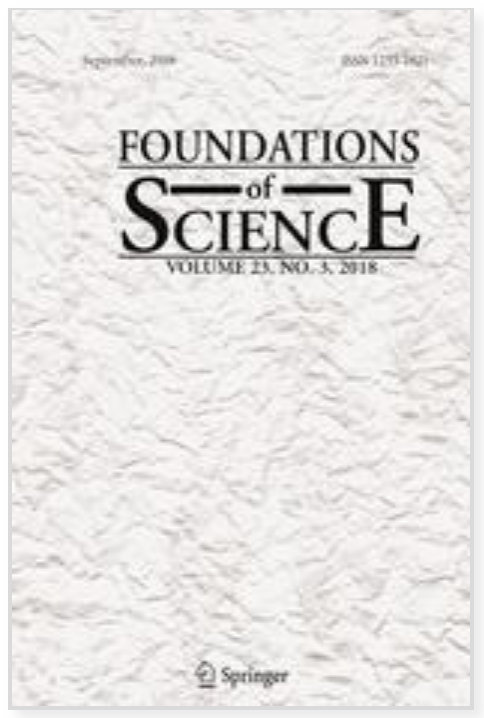
This special issue is the second outcome of the International Symposium “Worlds of Entan- glement,” held at the Free University of Brussels (VUB), on September 29–30, 2017, which had a follow up at the Institute of Philosophy and Complexity Sci- ences (IFICC), in Santiago de Chile, on March 7–8, 2019. The event gathered more than 50 scholars from different disciplines, ranging from pure mathematics to visual arts, and from multiple regions of the world, including Argentina, Austria, Canada, Chile, France, Ger- many, Italy, Japan, Poland and the United States, to animate an interdisciplinary dialogue about fundamental issues of science and society [...]
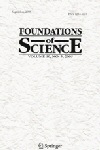
Aerts, D., Sassoli de Bianchi, M., Sozzo, S. & Veloz, T. (2020). Preface of the Special Issue International Symposium “Worlds of Entanglement.” Foundations of Science 25, pp. 1–4. Doi: 10.1007/s10699-019-09636-1 - PDF

This special issue is one of the outcomes of the International Symposium “Worlds of Entanglement,” held at the Free University of Brussels (VUB), on September 29–30, 2017. The event gathered more than 50 scholars from different disciplines, ranging from pure mathematics to visual arts, and from multiple parts of the world, including Argentina, Austria, Canada, Chile, France, Germany, Italy, Japan, Poland and the United States, among others, to animate an interdisciplinary dialogue about fundamental issues of science and society. Entanglement is a quantum phenomenon that can be produced when two or more physi- cal entities interact, and is reflected in the impossibility of describing the obtained col- lection in terms only of the composing entities [...]
Aerts, D., Sassoli de Bianchi, M., Sozzo, S. & Veloz, T. (2020). On the Conceptuality interpretation of Quantum and Relativity Theories. Foundations of Science 25, pp. 5–54. Doi: 10.1007/s10699-018-9557-z - PDF

How can we explain the strange behavior of quantum and relativistic entities? Why do they behave in ways that defy our intuition about how physical entities should behave, considering our ordinary experience of the world around us? In this article, we address these questions by showing that the comportment of quantum and relativistic entities is not that strange after all, if we only consider what their nature might possibly be: not an objectual one, but a conceptual one. This not in the sense that quantum and relativistic entities would be human concepts, but in the sense that they would share with the latter a same conceptual nature, similarly to how electromagnetic and sound waves, although very different entities, can share a same undulatory nature. When this hypothesis is adopted, i.e., when a conceptuality interpretation about the deep nature of physical entities is taken seriously, many of the interpretational difficulties disappear and our physical world is back making sense, though our view of it becomes radically different from what our classical prejudice made us believe in the first place.
Sassoli de Bianchi, M. (2020). Using abstract elastic membranes to learn about quantum measurements. Foundations of Science 25, pp. 77–85. Doi: 10.1007/s10699-018-9558-y - PDF

Sassoli de Bianchi, M. (2019). Violation of CHSH inequality and marginal laws in mixed sequential measurements with order effects. Soft Computing (Special Issue on Quantum Structures & Quantum Information Theory). Doi: 10.1007/s00500-019-04186-x - PDF
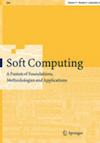
Aerts, D., Aerts Arguëlles, J., Beltran, L., Geriente, S., Sassoli de Bianchi, M., Sozzo, S. & Veloz, T. (2019). Quantum entanglement in physical and cognitive systems: a conceptual analysis and a general representation. European Physical Journal Plus 134: 493 - Doi: 10.1140/epjp/i2019-12987-0 - PDF
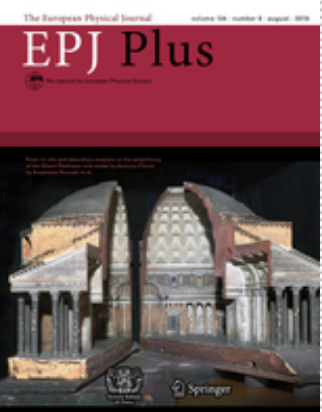
Aerts, D., Sassoli de Bianchi, M., Sozzo, S. & Veloz, T. (2019). Modeling Meaning Associated with Documental Entities: Introducing the Brussels Quantum Approach. In: Aerts D., Khrennikov A., Melucci M., Toni B. (eds) Quantum-Like Models for Information Retrieval and Decision-Making. STEAM-H: Science, Technology, Engineering, Agriculture, Mathematics & Health. Springer, Cham, pp. 1-33 - PDF. Doi: 10.1007/978-3-030-25913-6_1.

We show that the Brussels operational-realistic approach to quantum physics and quantum cognition offers a fundamental strategy for modeling the meaning associated with collections of documental entities. To do so, we take the World Wide Web as a paradigmatic example and emphasize the importance of distinguishing the Web, made of printed documents, from a more abstract meaning entity, which we call the Quantum Web, or QWeb, where the former is considered to be the collection of traces that can be left by the latter, in specific measurements, similarly to how a non-spatial quantum entity, like an electron, can leave localized traces of impact on a detection screen. The double-slit experiment is extensively used to illustrate the rationale of the modeling, which is guided by how physicists constructed quantum theory to describe the behavior of the microscopic entities. We also emphasize that the superposition principle and the associated interference effects are not sufficient to model all experimental probabilistic data, like those obtained by counting the relative number of documents containing certain words and co-occurrences of words. For this, additional effects, like context effects, must also be taken into consideration.
De Ronde, C. & Sassoli de Bianchi, M. (2019). A remark on quantum cloning. Revista Brasileira de Ensino de Física 41, e20190033. Doi: 10.1590/1806-9126-RBEF-2019-0033 - PDF
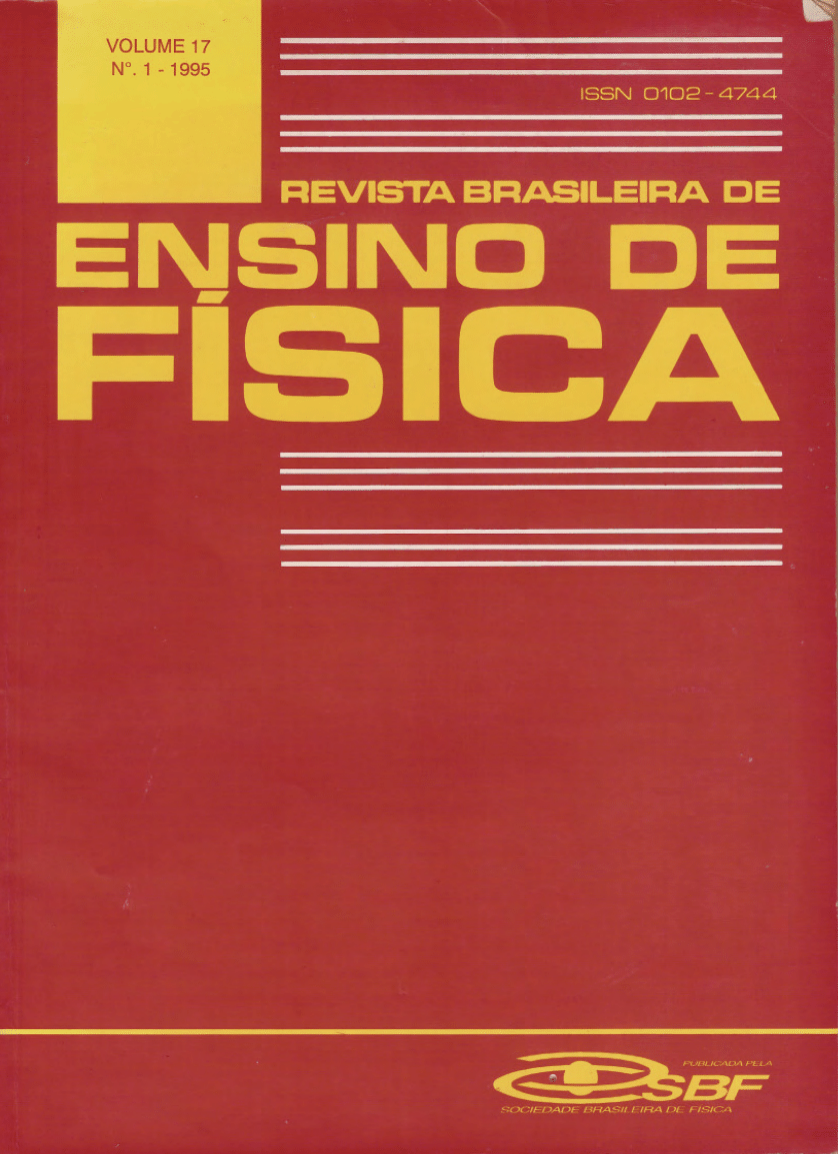
Aerts, D., Sassoli de Bianchi, M., Sozzo, S. & Veloz, T. (2019). From Quantum Axiomatics to Quantum Conceptuality. Activitas Nervosa Superior: Brain, Mind and Cognition 61, pp. 76–82 (special issue dedicated to Henry Stapp in honor of his 90th birthday). Doi: 10.1007/s41470-019-00030-7 - PDF
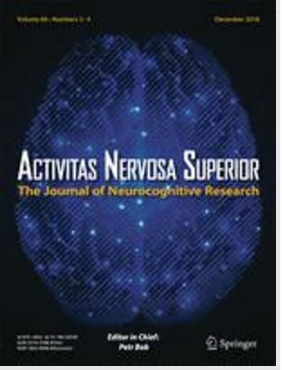
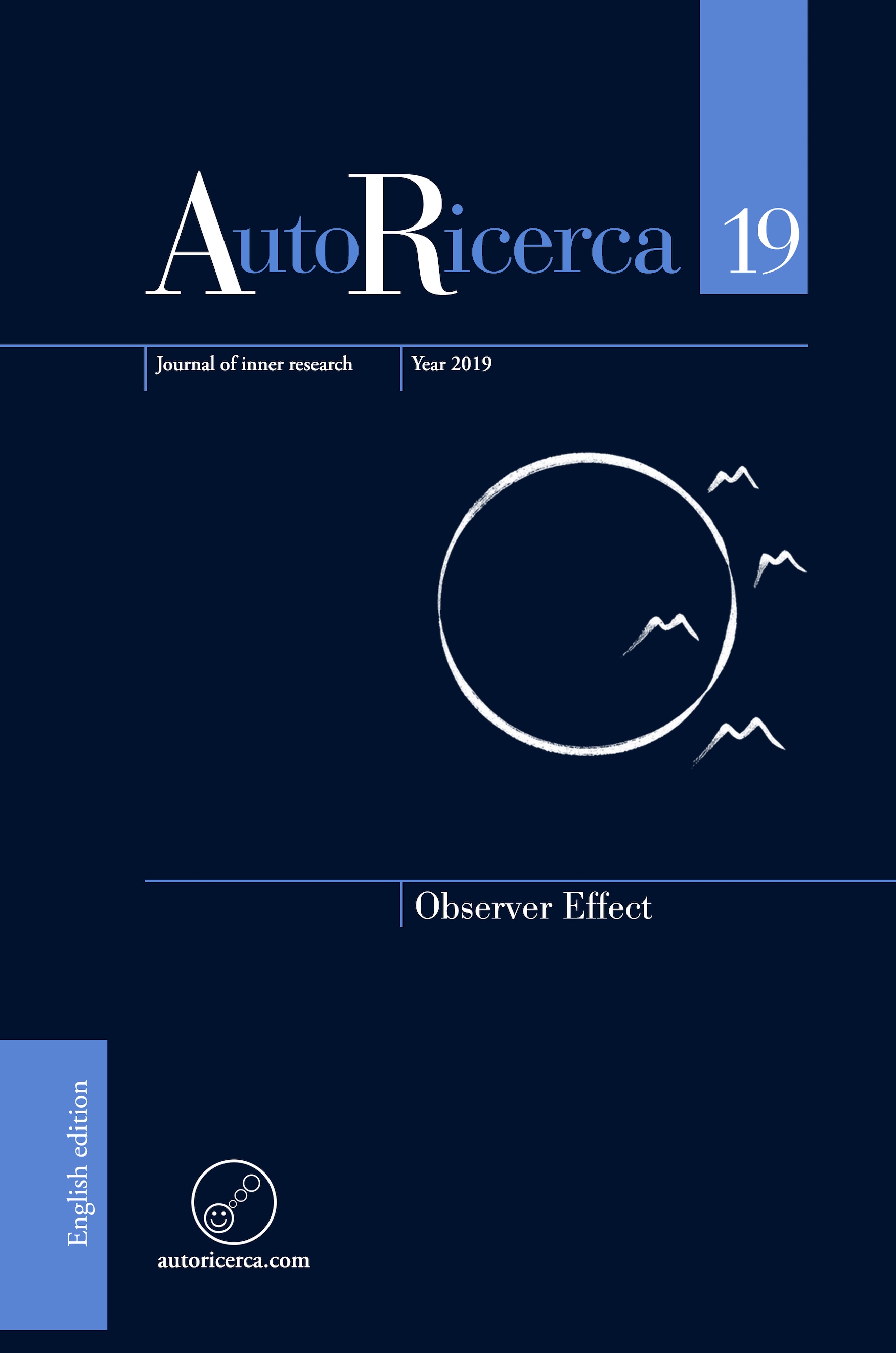
Sassoli de Bianchi, M. (2019). On the quantum ‘self-teleportation’ probability of a human body. AutoRicerca 19 (English edition), pp. 195-219. See also: arXiv:1712.08465 [physics.pop-ph].
The probability of quantum relocation of a human body, at a given distance, is estimated using two different methods, giving comparable results. Not only the obtained values for the probabilities are inconceivably small, but assumptions of a sci-fi nature are also necessary to ensure that they are not identical to zero. The notions of 'non-spatiality' and 'superselection rule' are also briefly discussed.

This is an article written in a popular science style, in which I will explain: (1) the famous Heisenberg uncertainty principle, expressing the experimental incompatibility of certain properties of micro-physical entities; (2) the Compton effect, describing the interaction of an electromagnetic wave with a particle; (3) the reasons of Bohr's complementarity principle, which will be understood as a principle of incompatibility; (4) the Einstein, Podolski and Rosen reality (or existence) criterion, and its subsequent revisitation by Piron and Aerts; (4) the mysterious non-spatiality of the quantum entities of a microscopic nature, usually referred to as non-locality. This didactical text requires no particular technical knowledge to be read and understood, although the reader will have to do her/his part, as conceptually speaking the discussion can become at times a little subtle. The text has been written having in mind one of the objectives of the Center Leo Apostel for Interdisciplinary Studies (CLEA): that of a broad dissemination of scientific knowledge. However, as it also presents notions that are not generally well-known, or well-understood, among professional physicists, its reading may also be beneficial to them.
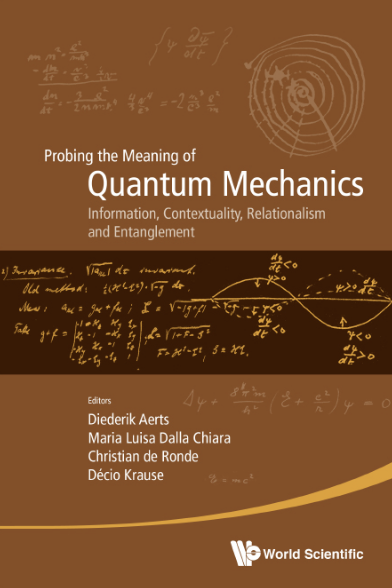
Aerts, D., Sassoli de Bianchi, M., Sozzo, S. & Veloz, T. (2019). Quantum cognition goes beyond-quantum: modeling the collective participant in psychological measurements. In: Probing the Meaning of Quantum Mechanics. Information, Contextuality, Relationalism and Entanglement. D. Aerts, M.L. Dalla Chiara, C. de Ronde & D. Krause (eds.) World Scientific, pp. 355-382. Doi: 10.1142/9789813276895_0017 - PDF

Sassoli de Bianchi, M. (2019). On Aerts’ overlooked solution to the EPR paradox. In: Probing the Meaning of Quantum Mechanics. Information, Contextuality, Relationalism and Entanglement. D. Aerts, M.L. Dalla Chiara, C. de Ronde & D. Krause (eds.) World Scientific, pp. 185-201. Doi: 10.1142/9789813276895_0010 - PDF


We motivate the possibility of using notions and methods derived from quantum physics, and more specifically from the research field known as 'quantum cognition', to optimally model different situations in the field of medicine, its decision-making processes and ensuing practices, particularly in relation to chronic and rare diseases. This also as a way to devise alternative approaches to the generally adopted double-blind gold standard.
Aerts, D., Sassoli de Bianchi, M., Sozzo, S. & Veloz, T. (2018). Modeling Human Decision-making: An Overview of the Brussels Quantum Approach. Foundations of Science 26, pp. 27–54 Doi: 10.1007/s10699-018-9559-x - PDF

We present the fundamentals of the quantum theoretical approach we have developed in the last decade to model cognitive phenomena that resisted modeling by means of classical logical and probabilistic structures, like Boolean, Kolmogorovian and, more generally, set theoretical structures. We firstly sketch the operational-realistic foundations of conceptual entities, i.e. concepts, conceptual combinations, propositions, decision-making entities, etc. Then, we briefly illustrate the application of the quantum formalism in Hilbert space to represent combinations of natural concepts, discussing its success in modeling a wide range of empirical data on concepts and their conjunction, disjunction and negation. Next, we naturally extend the quantum theoretical approach to model some long-standing fallacies of human reasoning, namely, the conjunction fallacy and the disjunction effect. Finally, we put forward an explanatory hypothesis according to which human reasoning is a defined superposition of emergent reasoning and logical reasoning, where the former generally prevails over the latter. The quantum theoretical approach explains human fallacies as the consequence of genuine quantum structures in human reasoning, i.e. contextuality, emergence, entanglement, interference and superposition. As such, it is alternative to the Kahneman-Tversky research programme, which instead aims to explain human fallacies in terms of individual heuristics and biases.
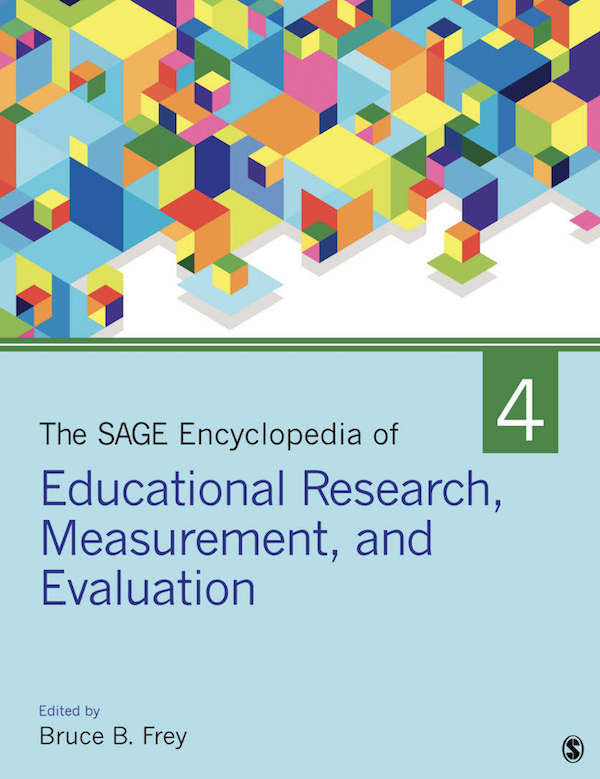
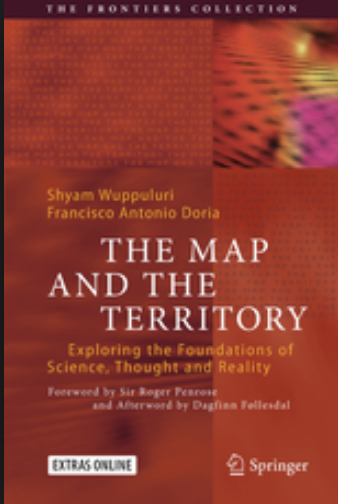

In the first half of this two-part article, we analyzed a cognitive psychology experiment where participants were asked to select pairs of directions that they considered to be the best example of Two Different Wind Directions, and showed that the data violate the CHSH version of Bell's inequality, with same magnitude as in typical Bell-test experiments in physics. In this second part, we complete our analysis by presenting a symmetrized version of the experiment, still violating the CHSH inequality but now also obeying the marginal law, for which we provide a full quantum modeling in Hilbert space, using a singlet state and suitably chosen product measurements. We also address some of the criticisms that have been recently directed at experiments of this kind, according to which they would not highlight the presence of genuine forms of entanglement. We explain that these criticisms are based on a view of entanglement that is too restrictive, thus unable to capture all possible ways physical and conceptual entities can connect and form systems behaving as a whole. We also provide an example of a mechanical model showing that the violations of the marginal law and Bell inequalities are generally to be associated with different mechanisms.

We present a cognitive psychology experiment where participants were asked to select pairs of spatial directions that they considered to be the best example of Two Different Wind Directions. Data are shown to violate the CHSH version of Bell's inequality with the same magnitude as in typical Bell-test experiments with entangled spins. Wind directions thus appear to be conceptual entities connected through meaning, in human cognition, in a similar way as spins appear to be entangled in experiments conducted in physics laboratories. This is the first part of a two-part article. In the second part, we present a symmetrized version of the same experiment for which we provide a quantum modeling of the collected data in Hilbert space.
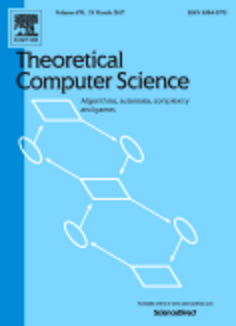


The mathematical formalism of quantum theory exhibits significant effectiveness when applied to cognitive phenomena that have resisted traditional (set theoretical) modeling. Relying on a decade of research on the operational foundations of micro-physical and conceptual entities, we present a theoretical framework for the representation of concepts and their conjunctions and disjunctions that uses the quantum formalism. This framework provides a unified solution to the 'conceptual combinations problem' of cognitive psychology, explaining the observed deviations from classical (Boolean, fuzzy set and Kolmogorovian) structures in terms of genuine quantum effects. In particular, natural concepts 'interfere' when they combine to form more complex conceptual entities, and they also exhibit a 'quantum-type context-dependence', which are responsible of the 'over- and under-extension' that are systematically observed in experiments on membership judgments.
Aerts, D., Aerts Arguëlles, J., Beltran, L., Beltran, L., Sassoli de Bianchi, M., Sozzo, S. & Veloz, T. (2017). Testing Quantum Models of Conjunction Fallacy on the World Wide Web. Int. J. Theor. Phys. 56, pp. 3744-3756. Doi:10.1007/s10773-017-3288-8 - PDF

The 'conjunction fallacy' has been extensively debated by scholars in cognitive science and, in recent times, the discussion has been enriched by the proposal of modeling the fallacy using the quantum formalism. Two major quantum approaches have been put forward: the first assumes that respondents use a two-step sequential reasoning and that the fallacy results from the presence of 'question order effects'; the second assumes that respondents evaluate the cognitive situation as a whole and that the fallacy results from the 'emergence of new meanings', as an 'effect of overextension' in the conceptual conjunction. Thus, the question arises as to determine whether and to what extent conjunction fallacies would result from 'order effects' or, instead, from 'emergence effects'. To help clarify this situation, we propose to use the World Wide Web as an 'information space' that can be interrogated both in a sequential and non-sequential way, to test these two quantum approaches. We find that 'emergence effects', and not 'order effects', should be considered the main cognitive mechanism producing the observed conjunction fallacies.
Aerts, D., Sassoli de Bianchi, M. & Sozzo, S. (2017). The extended Bloch Representation of Entanglement and Measurement in Quantum Mechanics. Int. J. Theor. Phys. 56: 3727. Doi:10.1007/s10773-016-3257-7 - PDF

The quantum formalism can be completed by assuming that a density operator can also represent a pure state. An 'extended Bloch representation' (EBR) then results, in which not only states, but also the measurement-interactions can be represented. The Born rule is obtained as an expression of the subjective lack of knowledge about the measurement-interaction that is each time actualized. Entanglement can also be consistently described in the EBR, as it remains compatible with the principle according to which a composite entity exists only if its components also exist, and therefore are in pure states.
Aerts, D., Beltran, L., Sassoli de Bianchi, M., Sozzo, S. & Veloz, T. (2017). Quantum Cognition Beyond Hilbert Space: Fundamentals and Applications. J.A. de Barros et al. (Eds.): QI 2016, Lecture Notes in Computer Science 10106, pp. 81-98. Doi: 10.1007/978-3-319-52289-0_7 - PDF1 & PDF2 (two-part article on the arXiv)
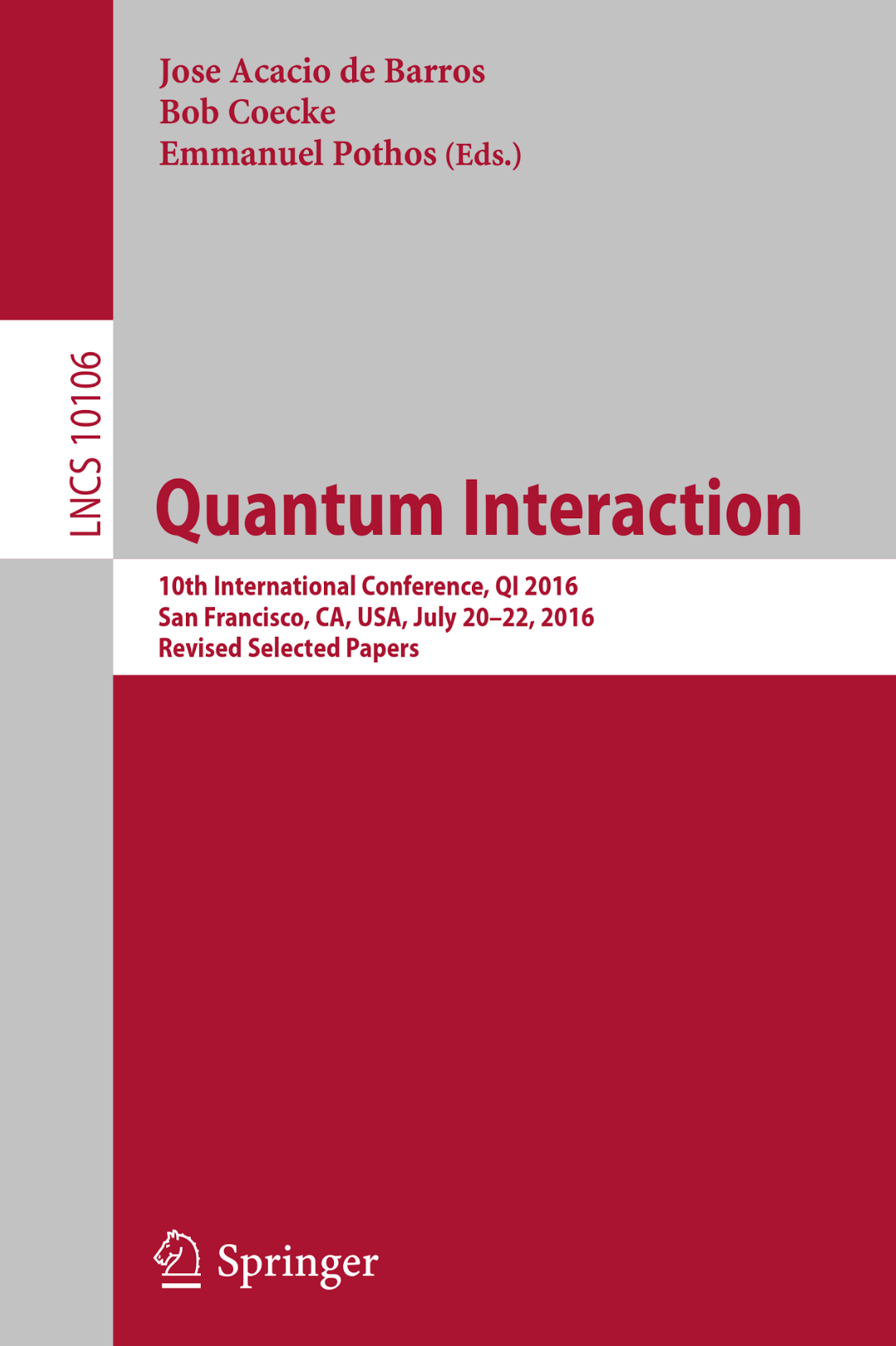
The 'quantum cognition' paradigm was recently challenged by its proven impossibility to simultaneously model 'question order effects' and `response replicability'. In the present article we describe sequential dichotomic measurements within an operational and realistic framework for human cognition, and represent them in a quantum-like 'extended Bloch representation', where the Born rule of quantum probability does not necessarily hold. We then apply this mathematical framework to successfully model question order effects, response replicability and unpacking effects, thus opening the way toward 'quantum cognition beyond Hilbert space'.
Aerts, D. & Sassoli de Bianchi, M. (2017). Beyond-quantum modeling of question order effects and response replicability in psychological measurements. Journal of Mathematical Psychology 79, pp. 104-120. Doi: 10.1016/j.jmp.2017.03.004 - PDF
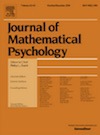
A general tension-reduction (GTR) model was recently considered (Aerts & Sassoli de Bianchi, 2015a,b) to derive quantum probabilities as (universal) averages over all possible forms of non-uniform fluctuations, and explain their considerable success in describing experimental situations also outside of the domain of physics, for instance in the ambit of quantum models of cognition and decision. Yet, this result also highlighted the possibility of observing violations of the predictions of the Born rule, in those situations where the averaging would not be large enough, or would be altered because of the combination of multiple measurements. In this article we show that this is indeed the case in typical psychological measurements exhibiting question order effects, by showing that their statistics of outcomes are inherently non-Hilbertian, and require the larger framework of the GTR-model to receive an exact mathematical description. We also consider another unsolved problem of quantum cognition: response replicability. It is has been observed that when question order effects and response replicability occur together, the situation cannot be handled anymore by quantum theory. However, we show that it can be easily and naturally described in the GTR-model. Based on these findings, we motivate the adoption in cognitive science of a hidden-measurements interpretation of the quantum formalism, and of its GTR-model generalization, as the natural interpretational framework explaining the data of psychological measurements on conceptual entities.
Sassoli de Bianchi, M. (2017). Theoretical and conceptual analysis of the celebrated 4π-symmetry neutron interferometry experiments. Foundations of Science 22, pp. 627-653. Doi: 10.1007/s10699-016-9491-x - PDF

In 1975, two experimental groups have independently observed the 4π-symmetry of neutrons' spin, when passing through a static magnetic field, using a three-blade interferometer made from a single perfect Si-crystal (analogous to the Mach–Zehnder interferometer of light optics). In this article, we provide a complete analysis of the experiment, both from a theoretical and conceptual point of view. Firstly, we solve the Schrödinger equation in the weak potential approximation, to obtain the amplitude of the refracted and forward refracted beams, produced by the passage of neutrons through one of the three plates of the LLL interferometer. Secondly, we analyze their passage through a static magnetic field region. This allows us to find explicit expressions for the intensities of the four beams exiting the interferometer, two of which will be interfering and show a typical 4π-symmetry, when the strength of the magnetic field is varied. In the last part of the article, we provide a conceptual analysis of the experiment, showing that a neutron's phase change, when passing through the magnetic field, is due to a longitudinal Stern-Gerlach effect, and not to a Larmor precession. We also emphasize that these experiments do not prove the observability of the sign change of the wave function, when a neutron is 2π rotated, but strongly indicate that the latter, like any other elementary "particle," would be a genuinely non-spatial entity.
Aerts, D. & Sassoli de Bianchi, M. (2017). Quantum measurements as weighted symmetry breaking processes: the hidden measurement perspective. International Journal of Quantum Foundations 3, pp. 1-16. https://www.ijqf.org/archives/3777

The purpose of the present note is twofold. Firstly, we highlight the similarities between the ontologies of Kastner's possibilist transactional interpretation (PTI) of quantum mechanics - an extension of Cramer's transactional interpretation - and the authors' hidden-measurement interpretation (HMI). Secondly, we observe that although a weighted symmetry breaking (WSB) process was proposed in the PTI, to explain the actualization of incipient transactions, no specific mechanism was actually provided to explain why the weights of such symmetry breaking are precisely those given by the Born rule. In other words, PTI, similarly to decoherence theory, provides a physical basis for the transition from a pure state to a fully reduced density matrix state, but doesn't explain a quantum measurement in a complete way. On the other hand, the recently derived extended Bloch representation (EBR) - a specific implementation the HMI - precisely provides such missing piece of explanation, i.e., a qualitative description of the WSB as a process of actualization of hidden measurement-interactions and, more importantly, a quantitative prediction of the values of the associated weights that is compatible with the Born rule of probabilistic assignment. Therefore, from the PTI viewpoint, the EBR provides the missing link for a complete description of a quantum measurement.
Aerts, D. & Sassoli de Bianchi, M. (2017). Do spins have directions? Soft Computing 21, pp. 1483-1504. Doi: 10.1007/s00500-015-1913-0 - PDF

The standard Bloch sphere representation has been recently generalized to describe not only systems of arbitrary dimension, but also their measurements, in what has been called the extended Bloch representation of quantum mechanics. This model, which offers a solution to the longstanding measurement problem, is based on the \emph{hidden-measurement interpretation of quantum mechanics}, according to which the Born rule results from our lack of knowledge of the measurement interaction that each time is actualized between the measuring apparatus and the measured entity. In this article we present the extended Bloch model and use it to investigate, more specifically, the nature of the quantum spin entities and of their relation to our three-dimensional Euclidean theater. Our analysis shows that spin eigenstates cannot generally be associated with directions in the Euclidean space, but only with generalized directions in the Blochean space, which apart from the special case of spin one-half entities, is a space of higher dimensionality. Accordingly, spin entities have to be considered as genuine non-spatial entities. We also show, however, that specific vectors can be identified in the Blochean theater that are isomorphic to the Euclidean space directions, and therefore representative of them, and that spin eigenstates always have a predetermined orientation with respect to them. We use the details of our results to put forward a new view of realism, that we call multiplex realism, providing a specific framework with which to interpret the human observations and understanding of the component parts of the world. Elements of reality can be represented in different theaters, one being our customary Euclidean space, and another one the quantum realm, revealed to us through our sophisticated experiments, whose elements of reality, in the quantum jargon, are the eigenvalues and eigenstates. Our understanding of the component parts of the world can then be guided by looking for the possible connections, in the form of partial morphisms, between the different representations, which is precisely what we do in this article with regard to spin entities.
Aerts, D., Sassoli de Bianchi, M. & Sozzo, S. (2016). On the Foundations of the Brussels Operational-Realistic Approach to Cognition. Frontiers in Physics 4, Article 17. Doi: 10.3389/fphy.2016.00017 - PDF
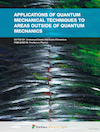
The scientific community is becoming more and more interested in the research that applies the mathematical formalism of quantum theory to model human decision-making. In this paper, we provide the theoretical foundations of the quantum approach to cognition that we developed in Brussels. These foundations rest on the results of two decade studies on the axiomatic and operational-realistic approaches to the foundations of quantum physics. The deep analogies between the foundations of physics and cognition lead us to investigate the validity of quantum theory as a general and unitary framework for cognitive processes, and the empirical success of the Hilbert space models derived by such investigation provides a strong theoretical confirmation of this validity. However, two situations in the cognitive realm, `question order effects' and `response replicability', indicate that even the Hilbert space framework could be insufficient to reproduce the collected data. This does not mean that the mentioned operational-realistic approach would be incorrect, but simply that a larger class of measurements would be in force in human cognition, so that an extended quantum formalism may be needed to deal with all of them. As we will explain, the recently derived 'extended Bloch representation' of quantum theory (and the associated 'general tension-reduction' model) precisely provides such extended formalism, while remaining within the same unitary interpretative framework.
Aerts, D. & Sassoli de Bianchi, M. (2016). The GTR-model: a universal framework for quantum-like measurements. In: Probing the Meaning of Quantum Mechanics. Superpositions, Dynamics, Semantics and Identity, pp. 91-140. Eds. D. Aerts, C. De Ronde, H. Freytes and R. Giuntini, World Scientific Publishing Company, Singapore. Doi: 10.1142/9789813146280_0005 - PDF
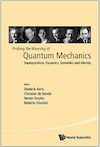
We present a very general geometrico-dynamical description of physical or more abstract entities, called the 'general tension-reduction' (GTR) model, where not only states, but also measurement-interactions can be represented, and the associated outcome probabilities calculated. Underlying the model is the hypothesis that indeterminism manifests as a consequence of unavoidable fluctuations in the experimental context, in accordance with the 'hidden-measurements interpretation' of quantum mechanics. When the structure of the state space is Hilbertian, and measurements are of the 'universal' kind, i.e., are the result of an average over all possible ways of selecting an outcome, the GTR-model provides the same predictions of the Born rule, and therefore provides a natural completed version of quantum mechanics. However, when the structure of the state space is non-Hilbertian and/or not all possible ways of selecting an outcome are available to be actualized, the predictions of the model generally differ from the quantum ones, especially when sequential measurements are considered. Some paradigmatic examples will be discussed, taken from physics and human cognition. Particular attention will be given to some known psychological effects, like question order effects and response replicability, which we show are able to generate non-Hilbertian statistics. We also suggest a realistic interpretation of the GTR-model, when applied to human cognition and decision, which we think could become the generally adopted interpretative framework in quantum cognition research.
Aerts, D. & Sassoli de Bianchi, M. (2016). The Extended Bloch Representation of Quantum Mechanics. Explaining Superposition, Interference and Entanglement. J. Math. Phys. 57, 122110. Doi: 10.1063/1.4973356 - PDF

The extended Bloch representation of quantum mechanics was recently derived to offer a (hidden-measurement) solution to the measurement problem. In this article we use it to investigate the geometry of superposition and entangled states, explaining the interference effects, and the entanglement correlations, in terms of the different orientations that a state-vector can take within the generalized Bloch sphere. We also introduce a tensorial determination of the generators of SU(N), particularly suitable to describe multipartite systems, from the viewpoint of the sub-entities. We then use it to show that non-product states admit a general description in which the sub-entities can always remain in well-defined states, even when they are entangled. Therefore, the completed version of quantum mechanics provided by the extended Bloch representation, in which the density operators are also representative of pure states, allows to solve not only the well-known measurement problem, but also the lesser-known entanglement problem. This because we no longer need to give up the general physical principle saying that a composite entity exists, and therefore is in a pure state, if and only if its components also exist, and therefore are in well-defined pure states.
Aerts, D. & Sassoli de Bianchi, M. (2016). A possible solution to the second entanglement paradox. In: Probing the Meaning of Quantum Mechanics. Superpositions, Dynamics, Semantics and Identity, pp. 351-359. Eds. D. Aerts, C. De Ronde, H. Freytes and R. Giuntini, World Scientific Publishing Company, Singapore. Doi: 10.1142/9789813146280_0016 - PDF

Entangled states are in conflict with a general physical principle which expresses that a composite entity exists if and only if its components also exist, and the hypothesis that pure states represent the actuality of a physical entity, i.e., its `existence'. A possible way to solve this paradox consists in completing the standard formulation of quantum mechanics, by adding more pure states. We show that this can be done, in a consistent way, by using the extended Bloch representation of quantum mechanics, recently introduced to provide a possible solution to the measurement problem. Hence, with the solution proposed by the extended Bloch representation of quantum mechanics, the situation of entangled states regains full intelligibility.
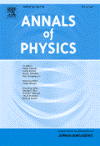
In [Ann. Phys. 351 (2014) 975-1025] there is a minor incorrect statement and a small gap in the derivation of the model. In this note we correct the statement and fill the gap.
Aerts, D. & Sassoli de Bianchi, M. (2015). Many-Measurements or Many-Worlds? A Dialogue. Found. of Sci. 20, pp. 399-427. Doi: 10.1007/s10699-014-9382-y - PDF

Many advocates of the Everettian interpretation consider that their approach is the only one taking quantum mechanics really seriously, and that by doing so a fantastic scenario for our reality can be deduced, made of infinitely many and continuously branching parallel worlds. In this article, written in the form of a dialogue, we suggest that quantum mechanics can be taken even more seriously, if the 'many-worlds' view is replaced by a 'many-measurements' view. In this way, not only the Born rule can be derived, thus solving the measurement problem, but a one-world 'non-spatial' reality can also be deduced, providing an even more fantastic scenario than that of the multiverse.
Aerts, D. & Sassoli de Bianchi, M. (2015). The unreasonable success of quantum probability II: Quantum measurements as universal measurements. Journal Mathematical Psychology 67, pp. 76-90. Doi: 10.1016/j.jmp.2015.05.001 - PDF

In the first part of this two-part article, we have introduced and analyzed a multidimensional model, called the rho-model, able to describe general quantum-like measurements with an arbitrary number of outcomes, and we have used it as a general theoretical framework to study the most general possible condition of lack of knowledge in a measurement, so defining what we have called a universal measurement. In this second part, we present the formal proof that universal measurements, which are averages over all possible forms of fluctuations, produce the same probabilities as measurements characterized by uniform fluctuations on the measurement situation. Since quantum probabilities can be proven to arise from the presence of such uniform fluctuations, we have proven that they can be interpreted as the probabilities of a first-order non-classical theory, describing situations in which the experimenter lacks complete knowledge about the nature of the interaction between the measuring apparatus and the entity under investigation. This same explanation can be applied - mutatis mutandis - to the case of cognitive measurements, made by human subjects on conceptual entities, or in decision processes, although it is not necessarily the case that the structure of the set of states would be in this case strictly Hilbertian. We also show that universal measurements correspond to maximally robust descriptions of indeterministic reproducible experiments, and since quantum measurements can also be shown to be maximally robust, this adds plausibility to their interpretation as universal measurements, and provides a further element of explanation for the great success of the quantum statistics in the description of a large class of phenomena.
Aerts, D. & Sassoli de Bianchi, M. (2015). The unreasonable success of quantum probability I: Quantum measurements as uniform fluctuations. Journal Mathematical Psychology 67, pp. 51-75. Doi: 10.1016/j.jmp.2015.01.003 - PDF

We introduce a model which allows to represent the probabilities associated with an arbitrary measurement situation as it appears in different domains of science - form cognitive science to physics - and use it to explain the emergence of quantum probabilities (the Born rule) as uniform fluctuations on this measurement situation. The model exploits the geometry of simplexes to represent the states both of the system and the measuring apparatus, in a way that the measurement probabilities can be derived as the Lebesgue measure of suitably defined convex subregions of the simplex under consideration. Although this Lebesgue-model is an abstract construct, it admits physical realizations. In this article we consider a very simple and evocative one, using a material point particle which is acted upon by special elastic membranes, which by breaking and collapsing are able to produce the different possible outcomes. This easy to visualize mechanical realization allows one to gain considerable insight into the possible hidden structure of a measurement process, be it from a measurement associated with a situation in cognitive science or in physics, or in any other domain. We also show that the Lebesgue-model can be further generalized into a model describing conditions of lack of knowledge generated by non-uniform fluctuations, which we call the rho-model. In this more general framework, which is more suitable to describe typical experiments in cognitive science, we define and motivate a notion of universal measurement, describing the most general possible condition of lack of knowledge in a measurement, emphasizing that the uniform fluctuations characterizing quantum measurements can also be understood as an average over all possible forms of non-uniform fluctuations which can be actualized in a measurement context. This means that the Born rule of quantum mechanics can be understood as a first order approximation of a more general non-uniform theory, thus explaining part of the great success of quantum probability in the description of different domains of reality. And more specifically, also providing a possible explanation for the success of quantum cognition, a research field in cognitive science employing the quantum formalism as a modeling tool. This is the first part of a two-part article. In the second part, the proof of the equivalence between universal measurements and uniform measurements, and its significance for quantum theory as a first order approximation, is given and further analyzed.
Sassoli de Bianchi, M. (2015). God may not play dice, but human observers surely do. Found. of Sci. 20, pp. 77-105. Doi: 10.1007/s10699-014-9352-4 - PDF

We investigate indeterminism in physical observations. For this, we introduce a distinction between genuinely indeterministic (creation-1 and discovery-1) observational processes, and fully deterministic (creation-2 and discovery-2) observational processes, which we analyze by drawing a parallel between the localization properties of microscopic entities, like electrons, and the lateralization properties of macroscopic entities, like simple elastic bands. We show that by removing the randomness incorporated in certain of our observational processes, acquiring over them a better control, we also alter these processes in such a radical way that in the end they do not correspond anymore to the observation of the same property. We thus conclude that a certain amount of indeterminism must be accepted and welcomed in our physical observations, as we cannot get rid of it without also diminishing our discriminative power. We also provide in our analysis some elements of clarification regarding the non-spatial nature of microscopic entities, which we illustrate by using an analogy with the process of objectification of human concepts. Finally, the important notion of relational properties is properly defined, and the role played by indeterminism in their characterization clarified.
Aerts, D. & Sassoli de Bianchi, M. (2014). The Extended Bloch Representation of Quantum Mechanics and the Hidden-Measurement Solution to the Measurement Problem. Annals of Physics 351, pp. 975-1025. Doi: 10.1016/j.aop.2014.09.020 - PDF - See also the Erratum

A generalized Poincare-Bloch sphere, in which the states of a quantum entity of arbitrary dimension are geometrically represented, is investigated and further extended, to also incorporate the measurements. This extended representation constitutes a general solution to the measurement problem, inasmuch it allows to derive the Born rule as an average over hidden-variables, describing not the state of the quantum entity, but its interaction with the measuring system. According to this modelization, a quantum measurement is to be understood, in general, as a tripartite process, formed by an initial deterministic decoherence-like process, a subsequent indeterministic collapse-like process, and a final deterministic purification-like process. We also show that quantum probabilities can be generally interpreted as the probabilities of a first-order non-classical theory, describing situations of maximal lack of knowledge regarding the process of actualization of potential interactions, during a measurement.
Aerts, D. & Sassoli de Bianchi, M. (2014). Solving the Hard Problem of Bertrand’s Paradox. J. Math. Phys. 55, 083503. Doi: 10.1063/1.4890291 - PDF

Bertrand's paradox is a famous problem of probability theory, pointing to a possible inconsistency in Laplace's principle of insufficient reason. In this article we show that Bertrand's paradox contains two different problems: an "easy" problem and a "hard" problem. The easy problem can be solved by formulating Bertrand's question in sufficiently precise terms, so allowing for a non ambiguous modelization of the entity subjected to the randomization. We then show that once the easy problem is settled, also the hard problem becomes solvable, provided Laplace's principle of insufficient reason is applied not to the outcomes of the experiment, but to the different possible "ways of selecting" an interaction between the entity under investigation and that producing the randomization. This consists in evaluating a huge average over all possible "ways of selecting" an interaction, which we call a 'universal average'. Following a strategy similar to that used in the definition of the Wiener measure, we calculate such universal average and therefore solve the hard problem of Bertrand's paradox. The link between Bertrand's problem of probability theory and the measurement problem of quantum mechanics is also briefly discussed.
Sassoli de Bianchi, M. (2014). A remark on the role of indeterminism and non-locality in the violation of Bell’s inequality. Annals of Physics 342, pp. 133-142. Doi: 10.1016/j.aop.2013.12.011 - PDF

Some years ago Aerts et al. presented a macroscopic model in which the amount of non-locality and indeterminism could be continuously varied, and used it to show that by increasing non-locality one increases, as expected, the degree of violation of Bell's inequality (BI), whereas, more surprisingly, by increasing indeterminism one decreases the degree of the violation of BI. In this note we propose a different macroscopic model in which the amount of non-locality and indeterminism can also be parameterized, and therefore varied, and we find that, in accordance with the model of Aerts et al., an increase of non-locality produces a stronger violation of BI. However, differently from their model, we also find that, depending on the initial state in which the system is prepared, an increase of indeterminism can either strengthen or weaken the degree of violation of BI.
Sassoli de Bianchi, M. (2013). Quantum dice. Annals of Physics 336, pp. 56-75. Doi: 10.1016/j.aop.2013.05.018 - PDF

In a letter to Born, Einstein wrote: "Quantum mechanics is certainly imposing. But an inner voice tells me that it is not yet the real thing. The theory says a lot, but does not really bring us any closer to the secret of the old one. I, at any rate, am convinced that He does not throw dice." In this paper we take seriously Einstein's famous metaphor, and show that we can gain considerable insight into quantum mechanics by doing something as simple as rolling dice. More precisely, we show how to perform measurements on a single die, to create typical quantum interference effects, and how to connect (entangle) two identical dice, to maximally violate Bell's inequality.
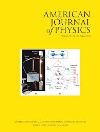
Sassoli de Bianchi, M. (2013). Quantum ‘fields’ are not fields. Comment on “There are no particles, there are only fields,” by Art Hobson. Am. J. Phys. 81, pp. 707-708. Doi: 10.1119/1.4811240 - PDF
We comment on a recent paper by Hobson, explaining that quantum "fields" are no more fields than quantum "particles" are particles, so that the replacement of a particle ontology by an all-field ontology cannot solve the typical interpretational problems of quantum mechanics.
Sassoli de Bianchi, M. (2013). Quantum measurements are physical processes. Comment on “Consciousness and the double-slit interference pattern: Six experiments,” By Dean Radin et al. Physics Essays 26, pp. 15-20. Doi: 10.4006/0836-1398-26.1.15 - PDF
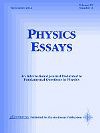
The validity of the assertion that some recent double-slit interference experiments, conducted by Radin et al., would have tested the possible role of the experimenter's mind in the collapse of the quantum wave function, is questioned. It is emphasized that quantum mechanics doesn't need any psychophysical ingredient to explain the measurement processes, and therefore parapsychologists shouldn't resort to the latter to support the possibility of psychokinesis, but search for more convincing explanations.
Sassoli de Bianchi, M. (2013). Using simple elastic bands to explain quantum mechanics: a conceptual review of two of Aerts’ machine-models. Central European Journal of Physics 11, pp. 147-161. Doi: 10.2478/s11534-012-0164-2 - PDF

From the beginning of his research, the Belgian physicist Diederik Aerts has shown great creativity in inventing a number of concrete machine-models that have played an important role in the development of general mathematical and conceptual formalisms for the description of the physical reality. These models can also be used to demystify much of the strangeness in the behavior of quantum entities, by allowing to have a peek at what's going on - in structural terms - behind the "quantum scenes," during a measurement. In this author's view, the importance of these machine-models, and of the approaches they have originated, have been so far seriously underappreciated by the physics community, despite their success in clarifying many challenges of quantum physics. To fill this gap, and encourage a greater number of researchers to take cognizance of the important work of so-called Geneva-Brussels school, we describe and analyze in this paper two of Aerts' historical machine-models, whose operations are based on simple breakable elastic bands. The first one, called the spin quantum-machine, is able to replicate the quantum probabilities associated with the spin measurement of a spin-1/2 entity. The second one, called the \emph{connected vessels of water model} (of which we shall present here an alternative version based on elastics) is able to violate Bell's inequality, as coincidence measurements on entangled states can do.
Sassoli de Bianchi, M. (2013). The Observer Effect. Found. of Sci. 18, pp. 213-243. Doi: 10.1007/s10699-012-9298-3 - PDF

Founding our analysis on the Geneva-Brussels approach to the foundations of physics, we provide a clarification and classification of the key concept of observation. An entity can be observed with or without a scope. In the second case, the observation is a purely non-invasive discovery process; in the first case, it is a purely invasive process, which can involve either creation or destruction aspects. An entity can also be observed with or without a full control over the observational process. In the latter case, the observation can be described by a symmetry breaking mechanism, through which a specific deterministic observational process is selected among a number of potential ones, as explained in Aerts' hidden measurement approach. This is what is called a product test, or product observation, whose consequences are that outcomes can only be predicted in probabilistic terms, as it is the case in typical quantum measurements. We also show that observations can be about intrinsic (stable) properties of the observed entity, or about relational (ephemeral) properties between the observer and observed entities; also, they can be about intermediate properties, neither purely classical, nor purely quantum. Our analysis allows us to propose a general conceptual characterization of quantum measurements, as observational processes involving three aspects: (1) product observations, (2) pure creation aspects and (3) ephemeral relational properties. We also discuss the important concept of non-spatiality and emphasize some of the differences and similarities between quantum and classical/relativistic observations.
Sassoli de Bianchi, M. (2013). The delta-quantum machine, the k-model, and the non-ordinary spatiality of quantum entities. Found. of Sci. 18, pp. 11-41. Doi: 10.1007/s10699-011-9284-1 - PDF

The purpose of this article is threefold. Firstly, it aims to present, in an educational and non-technical fashion, the main ideas at the basis of Aerts' creation-discovery view and hidden measurement approach: a fundamental explanatory framework whose importance, in this author's view, has been seriously underappreciated by the physics community, despite its success in clarifying many conceptual challenges of quantum physics. Secondly, it aims to introduce a new quantum-machine - that we call the delta-quantum-machine - which is able to reproduce the transmission and reflection probabilities of a one-dimensional quantum scattering process by a Dirac delta-function potential. The machine is used not only to demonstrate the pertinence of the above mentioned explanatory framework, in the general description of physical systems, but also to illustrate (in the spirit of Aerts' epsilon-model) the origin of classical and quantum structures, by revealing the existence of processes which are neither classical nor quantum, but irreducibly intermediate. We do this by explicitly introducing what we call the k-model and by proving that its processes cannot be modelized by a classical or quantum scattering system. The third purpose of this work is to exploit the powerful metaphor provided by our quantum-machine, to investigate the intimate relation between the concept of potentiality and the notion of non-spatiality, that we characterize in precise terms, introducing for this the new concept of weak actuality.
Sassoli de Bianchi, M. (2012). Time-delay of classical and quantum scattering processes: a conceptual overview and a general definition. Central European Journal of Physics 10, pp. 282-319. Doi: 10.2478/s11534-011-0105-5 - PDF

We present a step by step introduction to the notion of time-delay inclassical and quantum mechanics, with the aim of clarifying its foundation at aconceptual level. In doing so, we motivate the introduction of the concepts of"fuzzy" and "free-flight" sojourn times, that we use to provide the mostgeneral possible definition for the quantum time-delay, valid for simple andmultichannel scattering systems, with or without conditions on the observationof the scattering particle, and for incoming wave packets whose energy can besmeared out or sharply peaked (fixed energy). We conclude our conceptualanalysis by presenting what we think is the right interpretation of theconcepts of sojourn and delay times in quantum mechanics, explaining why, inultimate analysis, they shouldn't be called "times".
Sassoli de Bianchi, M. (2012). From permanence to total availability: a quantum conceptual upgrade. Found. of Sci. 17, pp. 223-244. Doi: 10.1007/s10699-011-9233-z - PDF

We consider the classical concept of time of permanence and observe that itsquantum equivalent is described by a bona fide self-adjoint operator. Itsinterpretation, by means of the spectral theorem, reveals that we have toabandon not only the idea that quantum entities would be characterizable interms of spatial trajectories but, more generally, that they would possess thevery attribute of spatiality. Consequently, a permanence time shouldn't beinterpreted as a "time" in quantum mechanics, but as a measure of the totalavailability of a quantum entity in participating to a creative process ofspatial localization.
Sassoli de Bianchi, M. (2011). Ephemeral properties and the illusion of microscopic particles. Found. of Sci. 16, pp. 393-409. Doi: 10.1007/s10699-011-9227-x. See also (Italian version): AutoRicerca 2, pp. 39-76 - PDF

Founding our analysis on the Geneva-Brussels approach to quantum mechanics, we use conventional macroscopic objects as guiding examples to clarify the content of two important results of the beginning of twentieth century: Einstein-Podolsky-Rosen's reality criterion and Heisenberg's uncertainty principle. We then use them in combination to show that our widespread belief in the existence of microscopic particles is only the result of a cognitive illusion, as microscopic particles are not particles, but are instead the ephemeral spatial and local manifestations of non-spatial and non-local entities.
Sassoli de Bianchi, M. (2011). Comment on “The quantum mechanics of electric conduction in crystals,” by R. J. Olsen and G. Vignale. Am. J. Phys. 79, pp. 546-549. Doi: 10.1119/1.3549205 - PDF
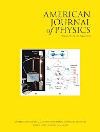
In this note we use the notion of time-delay to explain the physical content of the transformation properties of the transmission and reflection amplitudes, as a result of a displacement of the potential. We then reconsider the derivation in the above mentioned paper of Olsen and Vignale, to obtain the condition for total reflection, in the limit of an infinite number of cells composing the finite-periodic potential. In doing so, we also obtain an expression of Hartman's effect, showing that the group velocity of the transmitted particle inside the chain can become arbitrary large, as the number of cells tends to infinity. [See also the reply of the authors]
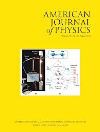
Sassoli de Bianchi, M. (2010). Comment on “Generalized composition law from 2x2 matrices,” by R. Giust, J.-M. Vigoureux, and J. Lages. Am. J. Phys. 78, pp. 645-646. Doi: 10.1119/1.3290871
We point out that the result derived by R. Giust, J.-M. Vigoureux, and J. Lages was previously obtained by different authors and different methods, in a more compact form, and comment on the utility of the factorization formula in relation to Levinson's theorem.
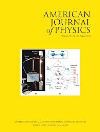
Sassoli de Bianchi, M. (2007). Comment on “The role of mediation in collisions and related analogs,” by E. Bashkansky and N. Netzer. Am. J. Phys. 75, p. 1166. Doi: 10.1119/1.2787019 - PDF
We show that the result derived by Bashkansky and Netzer is more general and not limited to the specific choice of a geometric sequence chosen for the mediator masses.
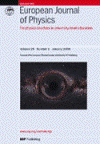
Sassoli de Bianchi, M. (2000). A Simple semiclassical derivation of Hartman’s effect. Eur. J. Phys. 21, pp. L1-L4. Doi: 10.1088/0143-0807/21/4/101 - PDF
We present a very simple semiclassical derivation of Hartman's effect valid for potential barriers of general shape. The derivation also gives some insight into the tunnelling time phenomenon.

Sassoli de Bianchi, M. & Di Ventra, M. (1998). A remark on the high-energy limit of the one-dimensional scattering problem with position dependent mass. Solid State Communications 106, pp. 249-251. Doi: 10.1016/S0038-1098(98)00073-8 - PDF
We show that, contrary to what would be expected on the basis of the mass barrier model, the transmission probability for the one-dimensional scattering problem with position-dependent mass normally tends to unity as energy goes to infinity, provided the mass is a continuous function of position.
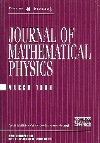
Sassoli de Bianchi, M. (1997). Comment on “Factorization of scattering matrices in one-dimensional Schrödinger-type equations,” by T. Aktosun, M. Klaus, and C. van der Mee. J. Math. Phys. 38, pp. 4882-4883. Doi: 10.1063/1.532132 - PDF
We point out a recent proof of the factorization formula using an adaptation of the variable phase method, and present a third alternative proof that uses integral equations instead of Schroedinger differential equations.
Sassoli de Bianchi, M. & Saraga, D. (1997). On the One-Dimensional Scattering by Time-Periodic Potentials: General Theory and Application to Specific Models. Helv. Phys. Acta 70, pp. 751-779. Doi: 10.5169/seals-117049 - PDF

A comprehensive introduction to the basic formalism of the one-dimensional scattering by time-periodic short-ranged potentials is presented. The fundamental objects of the theory (transmission and reflexion probabilities, sidebands and time delays) are defined, and a generalized Born expansion derived. Particular emphasis is given to the connection between the time-dependent approach and the quasi-stationary one. In particular, the independence of the scattering process of the choice of time-origin, in the limit of a monoenergetic wave packet, is clearly established. The generalized Born expansion is applied to two archetypical models: the square barrier with modulated height (the celebrated Büttiker-Landauer model) and the square barrier with oscillating position. For these two models, the full transmission probability is calculated up to the first non-vanishing correction in the time-dependent perturbation.

Martin, Ph.A. & Sassoli de Bianchi, M. (1997). Dynamical capture in quantum mechanics. J. Phys. A: Math. Gen. 30, pp. 1011-1015. Doi: 10.1088/0305-4470/30/3/023 - PDF
Using simple time-dependent methods, we study the phenomenon of dynamical capture in non relativistic quantum mechanics. We show that for time-dependent potentials asymptotically constant in time, the probability for an incoming particle to be trapped in the interaction region is in general non-zero. Capture in a stationary beam is also discussed.
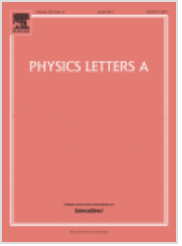
Sassoli de Bianchi, M. (1996). Comment on “Relative phase between quantum transmission and reflection amplitudes in one dimension” by Y. Fu. Physics Letters A 219, p. 359. Doi: 10.1016/0375-9601(96)00509-9
A recent result by Fu [Phys. Lett. A 205 (1996) 419] can be found in textbooks. His assertion of the unobservability of an additional arbitrary phase factor is disputed.
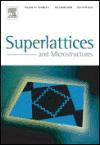
Sassoli de Bianchi, M. & Di Ventra, M. (1996). How many bound-states does a one-dimensional finite superlattice have? Superlattices and Microstructures 20, pp. 149-153. Doi: 10.1006/spmi.1996.0061 - PDF
We give a simple and general description of the bound-state structure of a one-dimensional finite superlattice as a function of its period d and some quantities characterizing the single unit cell.
Sassoli de Bianchi, M. (1995). Quelques aspects de la diffusion quantique: temps de retard, théorème de Levinson et potentiels dépendant du temps. Thèse N° 1438, présentée au département de physique (EPFL), pour l’obtention du grade de docteur ès sciences. Doi: 10.5075/epfl-thesis-1438 - PDF
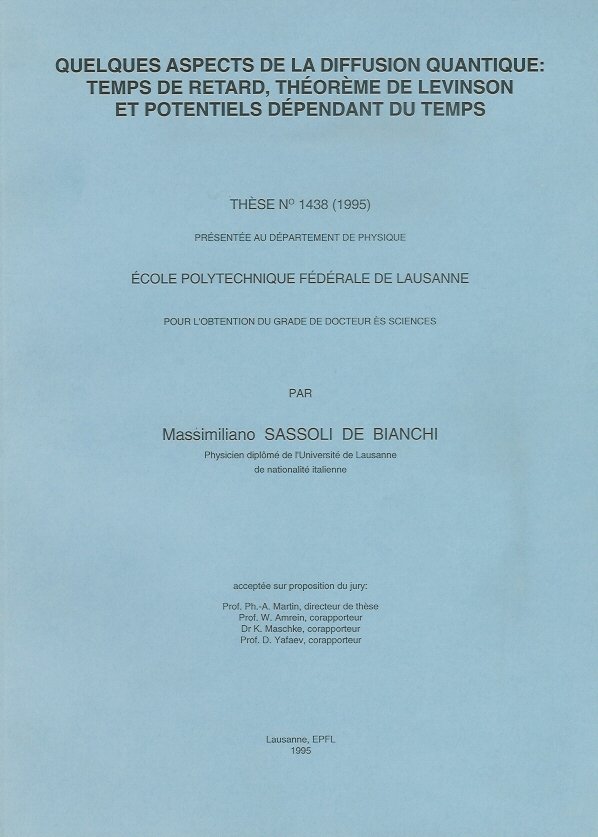
In this Thesis we study several aspects of potential scattering in non-relativistic quantum mechanics. In the first part, we study the concept of time delay. More precisely, after an elementary introduction to the theory (chapter I), we clarify in chapter II the role played by the localizing regions in the definition of global time delay. In chapter III, we generalize the concept to arbitrary conditions of observation for the scattered particle (conditional time delay). In chapters IV and V, we address the problem of the measure of time delay by physical clocks and, more specifically, by the Larmor clock which exploit the mechanism of precession of a spin in a magnetic field. In the second part, we are interested in the spectral property of time delay, its connection with Levinson's theorem, and the application of the latter to one-dimensional systems. We derive Levinson's theorem in chapter VI, using as a single ingredient the completeness of physical states. In chapter VII, we apply Levinson's result to determine the number of bound-states of a finite periodic potential, as a function of its period. For this, we use the the factorization property of the scattering matrix which we derive in chapter VIII in the more general situation of a particle with position-dependent mass. In the third part, we are concerned by time-dependent potentials. In chapter IX, we generalize the concept of time delay, and for the particular case of a periodic variation we derive a Levinson theorem. In chapter X, we consider potentials with very slow or very rapid variations in time. The low and high frequency limits are derived as well as their first corrections, and their physical significance discussed.
Dans cette thèse on aborde divers aspects de la diffusion par potentiel en mécanique quantique non-relativiste. Dans la première partie, nous étudions le concept de temps de retard. Plus précisément, après une introduction élémentaire à la théorie (chapitre I), nous clarifions au chapitre II le rôle joué par les régions de localisation dans la définition du temps de retard global. Au chapitre III, nous généralisons le concept à des conditions d'observation arbitraires pour la particule diffusée (temps de retard conditionnel). Aux chapitres IV et V, nous abordons le problème de la mesure du temps de retard par des horloges physiques et, plus particuliérement, par l'horloge de Larmor qui exploite le mécanisme de précession d'un spin dans un champ magnétique. Dans la deuxième partie nous nous intéressons à la propriété spectrale du temps de retard, à son lien avec le théorème de Levinson, et à l'application de ce dernier à des systèmes unidimensionnels. Nous dérivons le théorème de Levinson au chapitre VI, en utilisant comme seul ingrédient la complétude des états physiques. Au chapitre VII, nous appliquons le résultat de Levinson pour déterminer le nombre d'états liés d'un potentiel périodique fini, enfonction de sa période. Pour cela, nous utilisons la propriété de factorisation de la matrice de diffusion que nous dérivons au chapitre VIII dans le cadre plus général d'une particule avec masse dépendante de la position. Dans la troisième partie, nous sommes concernés par les potentiels dépendant du temps. Au chapitre IX, nous généralisons le concept de temps de retard, et pour le cas particulier d'une variation périodique nous dérivons un théorème de Levinson. Au chapitre X, nous considérons des potentiels qui varient très lentement ou très rapidement au cours du temps. Les limites basse et haute fréquence sont dérivées ainsi que les premières corrections, et leur interprétation physique est discutée.
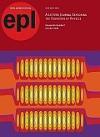
Martin, Ph.A. & Sassoli de Bianchi, M. (1995). Levinson’s theorem for time-periodic potentials. Europhys. Lett. 34, pp. 639-643. Doi: 10.1209/epl/i1996-00508-7 - PDF
Levinson's theorem is generalized to quantum scattering with time-periodic potentials. The zero-energy limit of the phase shift in the elastic channel is linked to the number of bound (cyclic) states of the time-dependent potential by the same relation as in the static case.
Sassoli de Bianchi, M. & Di Ventra, M. (1995). Differential equations and factorization property for the one-dimensional Schrödinger equation with position-dependent mass. Eur. J. Phys. 16, pp. 260-265. Doi: 10.1088/0143-0807/16/6/003 - PDF
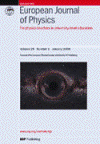
The variable phase method is applied to the one-dimensional Schrödinger equation with position-dependent (effective) mass, to derive first-order differential equations for the transmission and reflection amplitudes, and bound-state energies, which are particularly convenient for numerical computations. When the mass and potential have the same asymptotic at both ends of the real line, the method also allows to prove a factorization property of the scattering matrix.
Il metodo della fase variabile è applicato all’equazione di Schrödinger unidimensionale, con massa (efficace) dipendente dalla posizione, allo scopo di derivare equazioni differenziali del primo ordine per le ampiezze di trasmissione, riflessione e per le energie degli stati legati, che siano particolarmente adatte per calcoli numerici. Per una massa ed un potenziale aventi lo stesso andamento asintotico a destra e a sinistra, il metodo permette anche di dimostrare una proprietà di fattorizzazione della matrice di diffusione.
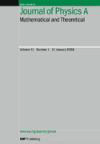
Martin, Ph.A. & Sassoli de Bianchi, M. (1995). On the low- and high-frequency limit of quantum scattering by time-dependent potentials. J. Phys. A 28, pp. 2403-2427. Doi: 10.1088/0305-4470/28/8/030 - PDF
Using time-dependent methods, we study the scattering of a quantum mechanical particle by short-range potentials with very slow or very fast periodic variations in time. The low- and high-frequency limits are derived as well as their first non-vanishing corrections, and their physical significance discussed.
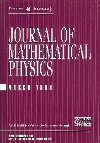
Sassoli de Bianchi, M. & Di Ventra, M. (1995). On the number of states bound by one-dimensional finite periodic potentials. J. Math. Phys. 36, pp. 1753-1764. Doi: 10.1063/1.531083 - PDF
Bound-states and zero-energy resonances of one-dimensional finite periodic potentials are investigated, by means of Levinson's theorem. For finite range potentials supporting no bound states, a lower bound for the (reduced) time delay at threshold is derived.

Martin, Ph.A. & Sassoli de Bianchi, M. (1994). Spin precession revisited. Found. Phys. 24, pp. 1371-1378 (1994). Doi: 10.1007/BF02283038 - PDF
The passage of a spin 1/2 neutral particle through a region of uniform magnetic field and the corresponding precession mechanism is analyzed from the view point of scattering theory, with particular consideration on the role of the field boundaries.
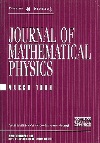
Sassoli de Bianchi, M. (1994). Levinson’s theorem, zero-energy resonances, and time delay in one-dimensional scattering systems. J. Math. Phys. 35, pp. 2719-2733. Doi: 10.1063/1.530481 - PDF
The one-dimensional Levinson's theorem is derived and used to study zero-energy resonances in a double-potential system. The low energy behavior of time delay is also investigated. In particular, we show that the quantum mechanical time delay admits a classical lower bound, in the low energy limit, if the potential has no bound-state solutions.
Sassoli de Bianchi, M. (1993). Conditional time-delay in scattering theory. Helv. Phys. Acta 66, pp. 361-377. Doi: 10.5169/seals-116575 - PDF

We give a general and mathematically precise definition of the notion of conditional time delay in scattering theory i.e., a notion of time delay for a given condition of observation of the scattered particle. A formula, generalizing the Eisenbud-Wigner time delay formula, is derived. The basic concept entering in the definition of the conditional time delay is that of conditional sojourn time. Although conditional sojourn times cannot be uniquely defined in quantum mechanics because of the uncertainty principle, we show that conditional time delays admit a well defined probabilistic interpretation in the limit of infinitely extended spatial regions. Some comments are presented in relation with the tunneling time problem.

Martin, Ph.A. & Sassoli de Bianchi, M. (1992). On the definition of time-delay in scattering theory. Helv. Phys. Acta 65, pp. 1119-1126 (1992). Doi: 10.5169/seals-116525- PDF
We show that the time delay of a scattering process, defined as the difference of interacting and free sojourn times for increasing spatial regions, can only exist for sequences of dilated balls. The transformation properties of the Eisenbud-Wigner formula under translations are discussed.
Martin, Ph.A. & Sassoli de Bianchi, M. (1992). On the theory of the Larmor clock and time-delay. J. Phys. A: Math. Gen. 25, pp. 3627-3647. Doi: 10.1088/0305-4470/25/12/023 - PDF
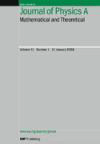
Using the time dependent scattering theory we prove that, in any spatial dimension and for arbitrary spin, the reading of the Larmor clock agrees with the global (Eisenbud-Wigner) time delay in the limit of an infinitesimal magnetic field. We show that convergence is also achieved at fixed energy (without oscillating terms) in the limit where the spatial switching on of the field occurs on distances much larger than the de Broglie wave length of the particle. Finally, we investigate the functioning of the spin clock beyond the linear response regime.
Sassoli de Bianchi, M. (1989). Sur la notion de degré de dépendance aléatoire. Travail de diplôme. Institut de Physique Théorique. Université de Lausanne - PDF
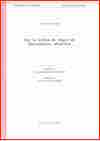
Ce travail a pour objet l'analyse de la notion de degré de dépendance aléatoire. Il s’agit d'une notion de caractère mathématique dont le cadre est celui de la théorie des probabilités. C'est pourquoi nous avons choisi de commencer ce mémoire par une courte introduction aux concepts fondamentaux de cette théorie, tout en nous limitant à l'exposition des résultats qui sont en relation étroite avec cette notion. Le degré de dépendance aléatoire est défini de manière formelle au chapitre II. A partir de cette définition nous nous efforcerons de dériver un certain nombre de formulations équivalentes, plus adaptées à des problèmes de calcul mais aussi d'interprétation plus facile. En s’appuyant sur la notion d'espace de Hilbert, nous mettrons l'accent sur le sens géométrique simple du degré de dépendance aléatoire, l'orthogonalité jouant alors le rôle de l'indépendance. Au chapitre III, après un bref aperçu de certaines propriétés des tribus finies, nous nous efforcerons de caractériser de manière générale les liens existants entre deux sous-tribus, suivant que la valeur prise par leur degré de dépendance aléatoire est 0 ou 1. En faisant usage de son interprétation géométrique, nous déduirons au chapitre IV une formule explicite, permettant de calculer le degré de dépendance aléatoire, de manière exacte, pour des sous-tribus à 4 éléments. Un certain nombre d'exemples, tels que les chaines de Markov, illustreront le résultat; enfin, on développera l'intuition géométrique du degré à l'aide d'une représentation graphique dans R^3, pour un espace de probabilités à 4 événements élémentaires. A la lumière de la notion d'opérateur de projection orthogonale, nous montrerons (chapitre V) que le degré de dépendance aléatoire peut s'interpréter comme la norme d'un opérateur auto-adjoint. Grâce à ce résultat, nous proposerons au chapitre VI une solution numérique au problème du calcul du degré de dépendance aléatoire, pour deux sous-tribus finies à un nombre quelconque d'éléments. Quelques exemples illustreront la méthode. Le chapitre VII est consacré à l'analyse des notions se trouvant dans la littérature, voisines de celle de degré de dépendance aléatoire. Nous nous livrerons, dans la mesure du possible, à des comparaisons sous forme d'inégalités. Enfin, nous préciserons dans quel sens le calcul du degré de dépendance aléatoire se simplifie dans le cas "privilégié" des variables aléatoires gaussiennes. Au dernier chapitre, nous donnerons une nouvelle interprétation du degré de dépendance aléatoire, permettant de le situer dans le cadre de la théorie des prédicteurs.
